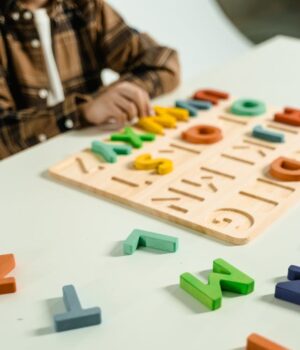I’ve always admired people who seem to pick up new skills effortlessly. Whether it’s learning a language, mastering a software tool, or playing an instrument, they make it look easy. For years, I tried to emulate that approach, diving headfirst into intense schedules, setting ambitious goals, and pushing myself to the point of exhaustion. Every time, I ended up frustrated, overwhelmed, and convinced that I simply wasn’t capable.
The turning point came when I decided to stop treating skill acquisition like a race. I realized that my previous attempts failed not because of a lack of discipline, but because I didn’t respect the natural rhythms of learning. I was trying to cram months of practice into a few weeks, thinking that sheer effort would make me proficient. What I discovered instead was that consistent, manageable practice far outweighed any marathon session.
I started with small, deliberate steps. Instead of committing to hours of uninterrupted practice, I allocated short daily sessions, focusing on one specific aspect at a time. This approach allowed me to make noticeable progress without feeling drained. For example, when I was learning a new coding language, I dedicated twenty minutes each day to experimenting with syntax and writing small functions. Over time, these brief sessions accumulated into a significant body of knowledge, and I didn’t dread opening my laptop each day.
Another major change was learning to embrace rest as part of the process. I used to think that taking breaks was a sign of laziness, but I realized that my brain needs time to consolidate new information. After intensive practice, I allowed myself periods of rest — sometimes a walk, sometimes simply stepping away for a few hours — and found that I returned to the task with greater clarity and retention. It turns out that learning without burning out isn’t about doing more; it’s about doing better.
Tracking progress became another essential tool. I kept a journal of small victories: a piece of code that ran successfully, a sentence constructed correctly in a new language, a chord played smoothly. Reviewing these incremental improvements reinforced my motivation and showed me that consistent effort pays off. It also helped me identify patterns in my learning — when I was most focused, which techniques worked best, and where I tended to make repeated mistakes.
One technique that proved especially effective was interleaving. Instead of practicing one aspect of a skill exclusively until I felt competent, I mixed different elements together. For instance, when learning digital design tools, I alternated between creating simple layouts, experimenting with typography, and testing color palettes. This variety kept my mind engaged and accelerated retention because it forced me to apply concepts in multiple contexts rather than memorizing them in isolation.
I also adjusted my expectations. In the past, I expected mastery to come quickly, and when it didn’t, I became discouraged. Now, I remind myself that progress is rarely linear. There are plateaus, moments of confusion, and even periods where it feels like I’ve forgotten more than I’ve learned. Accepting that these fluctuations are normal reduced the pressure and allowed me to persist with curiosity instead of frustration.
Another revelation was the importance of accountability without pressure. I shared my learning journey with a friend who was supportive but not judgmental. Simply articulating my goals and reflecting on progress helped me stay consistent. It wasn’t about being compared to anyone else or racing against external deadlines; it was about maintaining a personal rhythm that felt sustainable.
I experimented with micro-goals. Rather than aiming to “become fluent” or “master a software tool,” I set specific, achievable targets for each session. Completing a micro-goal provided immediate satisfaction and kept my motivation steady. Over time, these small wins compounded, leading to meaningful competence that didn’t feel forced.
Another strategy that helped prevent burnout was incorporating curiosity and play into the learning process. I approached challenges as experiments rather than tests. If I made a mistake, I analyzed it with curiosity instead of self-criticism. This mindset turned frustration into a tool for growth. It reminded me that learning is an iterative process, and errors are not failures but essential feedback.
I also optimized my environment. Eliminating distractions and creating a dedicated space for practice made a noticeable difference. When I sit down to learn, I now have everything I need within reach — resources, notes, tools — and minimal interruptions. This setup maximizes focus during short sessions, making each minute more productive without requiring marathon effort.
Over time, the cumulative effect of these approaches became clear. Skills that had once felt inaccessible were gradually integrated into my routine. Tasks that used to feel daunting became approachable, and the joy of learning returned. Most importantly, I no longer experience the mental fatigue and self-doubt that plagued me during previous attempts. By respecting the natural cadence of learning, balancing effort with rest, and focusing on progress rather than perfection, I finally found a sustainable path to growth.
Through this process, I also discovered that teaching or sharing what I learned reinforces retention. Explaining concepts to someone else, even in informal conversations or through written notes, deepens understanding. This practice doesn’t just benefit others; it strengthens my own grasp of the skill and uncovers areas that need further refinement.
I realized that the journey matters as much as the outcome. Instead of obsessing over how quickly I could achieve mastery, I began appreciating the daily practice, the small discoveries, and the iterative improvements. This shift in perspective transformed learning from a stressful obligation into an engaging process. It made me more resilient, patient, and ultimately more effective.
By embracing this approach, I have since picked up additional skills with the same framework. Each time, I apply the principles of short, focused practice, deliberate rest, micro-goals, curiosity, and reflection. The consistency and sustainability of the method outweigh the intensity of any single session. It’s a reminder that learning is a marathon, not a sprint — and that endurance comes from pacing yourself, not pushing past your limits.
The key takeaway is that avoiding burnout isn’t about eliminating challenges or reducing effort. It’s about structuring practice in a way that aligns with human cognitive and emotional rhythms. It’s about making steady progress, celebrating small wins, and maintaining curiosity. It’s about designing a learning journey that you can sustain over months or years, rather than burning out after a few weeks of overexertion.







